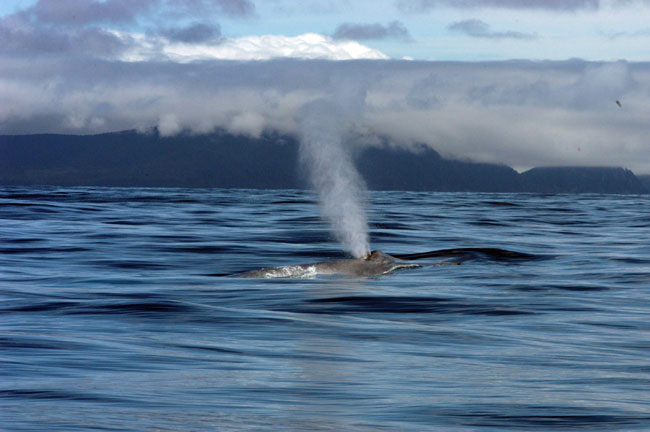Good News: Rare Blue Whales on the Move

Blue whales, the world's largest animals, are on the move. These marine mammals migrated from California waters to areas off Canada and Alaska for the first time since commercial whaling ended in 1965, researchers announced recently. The researchers identified 15 blue whales that have appeared off the coast of British Columbia and the Gulf of Alaska since 1997. Four of these whales were recognized as ones that were also sighted off California shores (in Santa Barbara Channel and at Bodega Bay, north of San Francisco), suggesting that the whales are returning to an old migration pattern between the coasts. Before commercial whaling began in the early 1900s, blue whales were found extensively throughout the North Pacific and California waters. But from the 1920s to the 1960s, whaling severely reduced the whale populations. Blue whales never recovered in the northern Pacific, making sightings in this area rare. However, much larger groups of whales have been observed close to California since the 1970s. The scientists had previously thought that the California population was separate from the population that had historically resided in north Pacific waters. But the current study indicates that whales off the coast of British Columbia and the Gulf of Alaska are likely part of the California population. To identify the blue whales, the researchers looked at photographs of the cetaceans taken in the North Pacific Ocean and compared them with a library of blue whale pictures taken along the West Cost of the United States and southern Pacific. The scientists matched the whales by looking at their skin pigmentation patterns and dorsal fin shape. The researchers are not sure why the whales are shifting their migration patterns, but they speculate that the whales may be following their food. Changes in ocean conditions may have alerted the availability of krill, the whale's main food source, and moved it farther north. Blue whales are the largest animals ever know to have existed on the planet, and they can grow to lengths of 100 feet and weigh more than 330,000 pounds. There are only an estimated 5,000 to 12,000 of these creatures remaining today, and they are currently considered endangered by the U.S. Endangered Species Act. The study was published online in the journal Marine Mammal Science on April 15.
{{ video="LS_090512_blue-whale" title="Blue Whales Migrate North to Alaska" caption="This blue whale filmed in the Gulf of Alaska has been identified several times off the coast of California. The giant creatures are migrating again, scientists said this week. Credit: Jay Barlow/NOAA" }}
- Video: Blue Whale Migrates North to Alaska
- Top 10 Most Incredible Animal Journies
- Video: Why Whales Are Starving
Sign up for the Live Science daily newsletter now
Get the world’s most fascinating discoveries delivered straight to your inbox.

Rachael is a Live Science contributor, and was a former channel editor and senior writer for Live Science between 2010 and 2022. She has a master's degree in journalism from New York University's Science, Health and Environmental Reporting Program. She also holds a B.S. in molecular biology and an M.S. in biology from the University of California, San Diego. Her work has appeared in Scienceline, The Washington Post and Scientific American.










